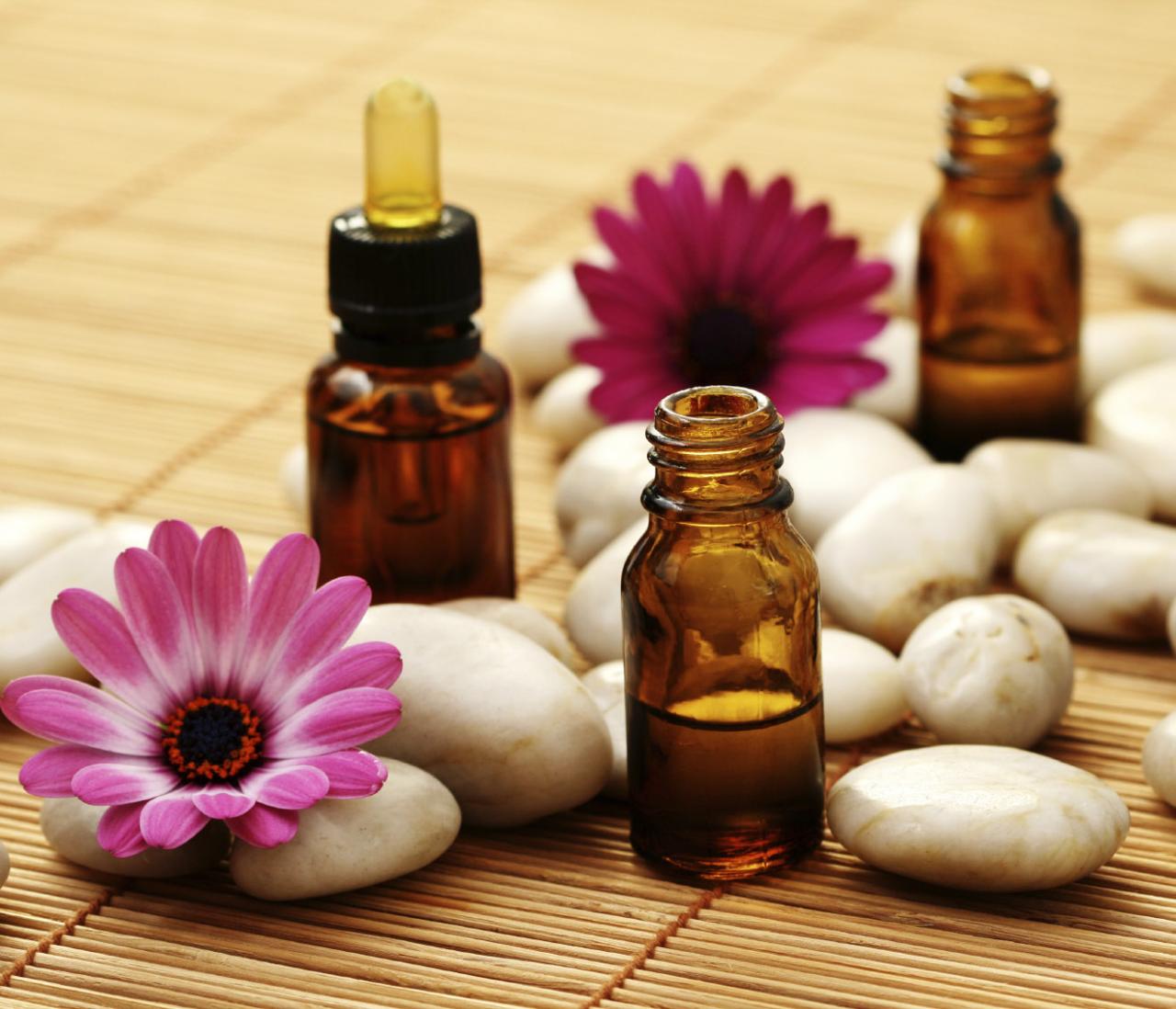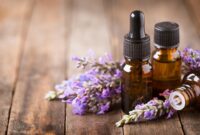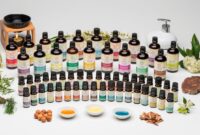Aromatherapy history, a journey through time, unfolds an enchanting narrative of aromatic plants and essential oils, deeply intertwined with human civilization. From ancient rituals to modern marvels, this aromatic odyssey reveals the profound impact of scents on our physical, emotional, and spiritual well-being.
Ancient civilizations embraced aromatherapy as a sacred art, incorporating fragrant herbs and oils into religious ceremonies, healing practices, and daily life. The spread of knowledge and trade routes facilitated the exchange of aromatic treasures, enriching cultures worldwide.
Historical Origins of Aromatherapy

The use of aromatic plants and essential oils for therapeutic and spiritual purposes has a rich and diverse history dating back to ancient civilizations.
In ancient Egypt, aromatic plants such as myrrh, frankincense, and lotus were used in religious rituals, embalming, and as medicines. The Ebers Papyrus, an ancient Egyptian medical text dating back to 1550 BCE, contains numerous recipes for using essential oils for healing.
Mesopotamia
The ancient Mesopotamians also used aromatic plants extensively. The Sumerians, who lived in Mesopotamia from around 3500 BCE, used cedarwood oil as an antiseptic and insect repellent. The Babylonians, who succeeded the Sumerians, used a variety of aromatic plants, including myrrh, frankincense, and cinnamon, in religious rituals and healing practices.
China
In ancient China, aromatic plants were used in traditional Chinese medicine for thousands of years. The Chinese believed that the fragrance of plants could balance the body’s energy, or qi. They used essential oils for a variety of purposes, including treating headaches, digestive problems, and skin conditions.
India, Aromatherapy history
In ancient India, aromatic plants were used in Ayurvedic medicine, a traditional system of medicine that is still practiced today. Ayurvedic practitioners used essential oils for a variety of purposes, including promoting relaxation, improving sleep, and boosting immunity.
Trade and Exploration
The spread of aromatherapy knowledge was facilitated by trade and exploration. Merchants and travelers carried aromatic plants and essential oils from one region to another, introducing new scents and healing practices to different cultures.
Aromatherapy in Traditional Medicine
Aromatherapy has been an integral part of traditional medicine systems for centuries, with roots in ancient civilizations. These systems, such as Ayurveda, Traditional Chinese Medicine (TCM), and Unani medicine, have employed essential oils for their therapeutic properties, cultural significance, and philosophical underpinnings.
Ayurveda
In Ayurveda, aromatherapy is closely intertwined with the concept of doshas—Vata, Pitta, and Kapha—which represent the balance of elements in the body. Essential oils are used to balance these doshas, promote well-being, and address specific ailments.
- Vata-balancing oils: Basil, lavender, clary sage
- Pitta-balancing oils: Sandalwood, rose, jasmine
- Kapha-balancing oils: Eucalyptus, peppermint, rosemary
Traditional Chinese Medicine
TCM views aromatherapy as a way to harmonize the body’s qi (energy) flow. Essential oils are used to stimulate specific acupuncture points, promote circulation, and address imbalances.
- Qi-regulating oils: Cinnamon, ginger, clove
- Yang-tonifying oils: Rosemary, basil, peppermint
- Yin-nourishing oils: Rose, sandalwood, jasmine
Unani Medicine
Unani medicine, rooted in ancient Greek and Arabic traditions, incorporates aromatherapy into its holistic approach to healing. Essential oils are believed to have specific medicinal properties and are used to treat various conditions.
- Anti-inflammatory oils: Frankincense, myrrh, chamomile
- Antimicrobial oils: Tea tree, lavender, eucalyptus
- Analgesic oils: Peppermint, wintergreen, clove
Scientific Exploration and Modern Aromatherapy: Aromatherapy History

The scientific exploration of essential oils and their therapeutic properties began in the 19th century. French chemist René-Maurice Gattefossé accidentally discovered the antiseptic properties of lavender oil after burning his hand in a laboratory accident. This incident sparked interest in the potential therapeutic applications of essential oils, leading to further research and experimentation.
In the 20th century, advances in chemistry and pharmacology helped identify the chemical constituents of essential oils and their pharmacological effects. Clinical trials and other research studies provided evidence for the efficacy of aromatherapy in various conditions, including stress, anxiety, pain, and sleep disorders.
Key Discoveries and Advancements
- Identification of over 1000 chemical constituents in essential oils, including terpenes, esters, alcohols, and ketones.
- Discovery of the antimicrobial, antioxidant, anti-inflammatory, and analgesic properties of essential oils.
- Development of standardized methods for extracting and analyzing essential oils to ensure quality and purity.
- Establishment of safety guidelines and protocols for the use of essential oils in aromatherapy.
Role of Chemistry, Pharmacology, and Clinical Trials
Chemistry plays a crucial role in identifying and characterizing the chemical constituents of essential oils. Pharmacology investigates the biological effects of essential oils on cells and tissues. Clinical trials provide scientific evidence for the efficacy and safety of aromatherapy interventions.
Together, these disciplines have contributed significantly to the development of modern aromatherapy practices, ensuring the safe and effective use of essential oils for therapeutic purposes.
Current Applications and Trends

Aromatherapy has gained widespread popularity in recent years due to its therapeutic benefits and versatility. It is now extensively used in various settings, including healthcare, wellness, and personal care.
In healthcare, aromatherapy is employed as a complementary therapy to alleviate symptoms and improve well-being in conditions such as stress, anxiety, depression, pain management, and respiratory issues. Hospitals and clinics are increasingly incorporating aromatherapy into their treatment plans to enhance patient comfort and reduce the need for conventional medications.
Wellness and Personal Care
Aromatherapy has become an integral part of the wellness and personal care industry. Essential oils are widely used in massage therapy, spa treatments, and home fragrance diffusers to promote relaxation, improve mood, and enhance sleep quality. Aromatherapy products, such as scented candles, bath bombs, and body lotions, are also popular for their calming and rejuvenating effects.
Emerging Trends and Innovations
The field of aromatherapy is constantly evolving, with new research and innovations emerging regularly. One notable trend is the development of inhalable aromatherapy devices, such as nasal inhalers and nebulizers, which provide a convenient and effective way to deliver essential oils directly to the respiratory system.
Another growing trend is the integration of aromatherapy with other complementary therapies, such as yoga, meditation, and mindfulness practices. This holistic approach combines the therapeutic benefits of essential oils with the mind-body connection to enhance overall well-being.
Essential Oils and Their Therapeutic Properties

Essential oils are highly concentrated, volatile compounds extracted from plants. They possess a wide range of therapeutic properties, making them valuable in aromatherapy and natural healing practices. The following table organizes essential oils based on their primary therapeutic uses, providing information on their botanical source, extraction method, key chemical constituents, and examples.
Antibacterial and Antifungal
- Oil Name:Tea Tree Oil
- Botanical Source: Melaleuca alternifolia
- Extraction Method:Steam distillation
- Key Chemical Constituents:Terpinen-4-ol, α-terpineol
- Primary Therapeutic Uses:Antibacterial, antifungal, antiseptic
- Oil Name:Lavender Oil
- Botanical Source: Lavandula angustifolia
- Extraction Method:Steam distillation
- Key Chemical Constituents:Linalool, linalyl acetate
- Primary Therapeutic Uses:Antibacterial, antifungal, calming
Anti-inflammatory
- Oil Name:Turmeric Oil
- Botanical Source: Curcuma longa
- Extraction Method:Steam distillation
- Key Chemical Constituents:Curcumin, turmerone
- Primary Therapeutic Uses:Anti-inflammatory, antioxidant, analgesic
- Oil Name:Ginger Oil
- Botanical Source: Zingiber officinale
- Extraction Method:Steam distillation
- Key Chemical Constituents:Gingerol, zingiberene
- Primary Therapeutic Uses:Anti-inflammatory, analgesic, digestive
Relaxing and Calming
- Oil Name:Chamomile Oil
- Botanical Source: Matricaria recutita
- Extraction Method:Steam distillation
- Key Chemical Constituents:Chamazulene, α-bisabolol
- Primary Therapeutic Uses:Relaxing, calming, anti-inflammatory
- Oil Name:Bergamot Oil
- Botanical Source: Citrus bergamia
- Extraction Method:Cold pressing
- Key Chemical Constituents:Linalool, limonene
- Primary Therapeutic Uses:Relaxing, uplifting, antidepressant
Closure
Today, aromatherapy continues to flourish, seamlessly blending ancient wisdom with scientific advancements. Modern research unveils the therapeutic potential of essential oils, offering a holistic approach to health and wellness. Aromatherapy finds its place in healthcare settings, personal care routines, and as a complementary therapy, harmoniously integrating with other modalities to enhance well-being.
Questions Often Asked
What is the earliest known use of aromatherapy?
Aromatherapy traces its roots back to ancient Egypt, where aromatic plants and oils were used in religious rituals and embalming practices.
How did aromatherapy spread across different cultures?
Trade routes and exploration played a pivotal role in disseminating aromatherapy knowledge. Merchants and travelers carried aromatic treasures, introducing new scents and techniques to various civilizations.
What are some traditional uses of aromatherapy?
Traditional medicine systems like Ayurveda, TCM, and Unani medicine have long incorporated aromatherapy into their healing practices, using specific essential oils for therapeutic purposes.


